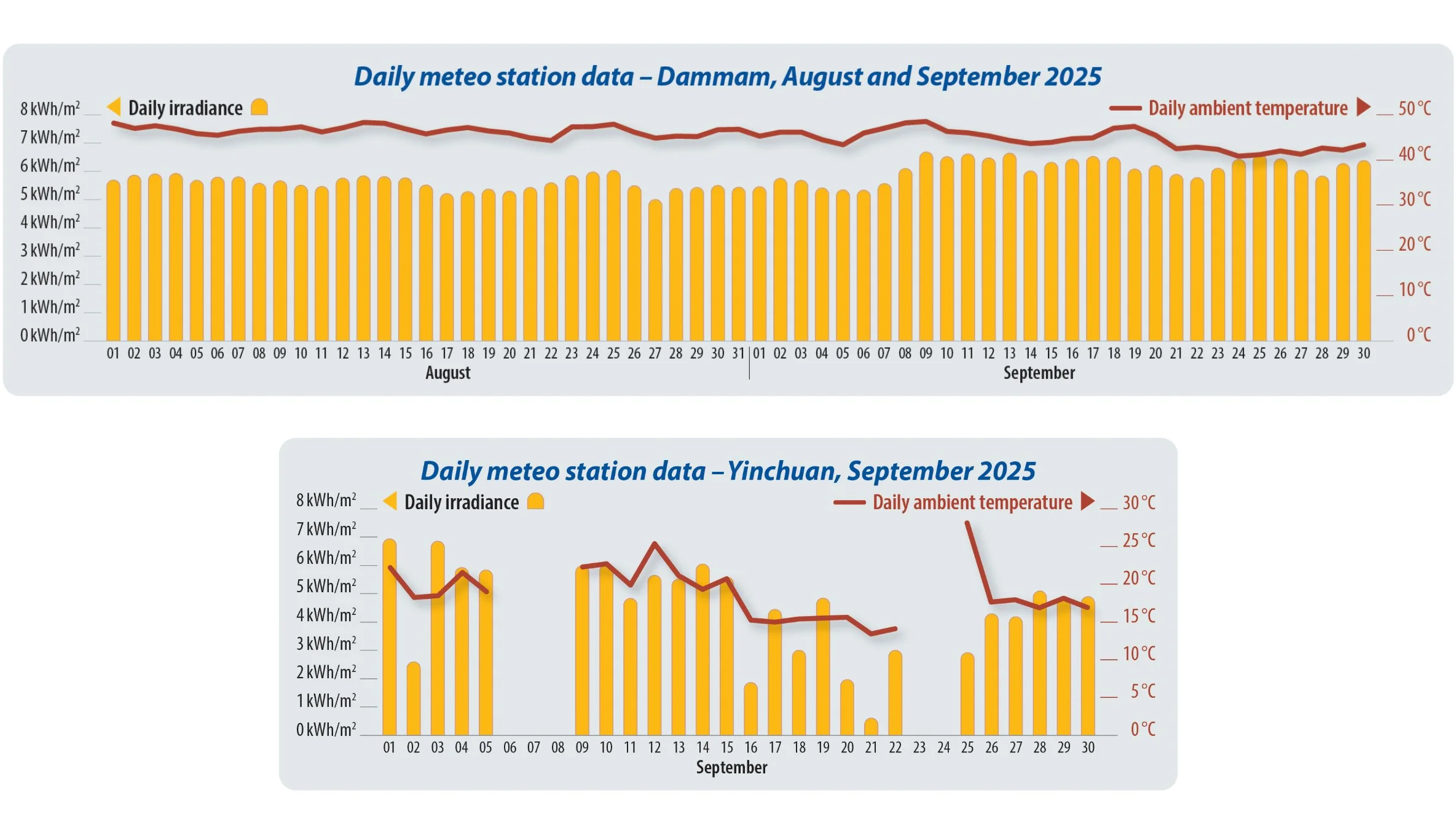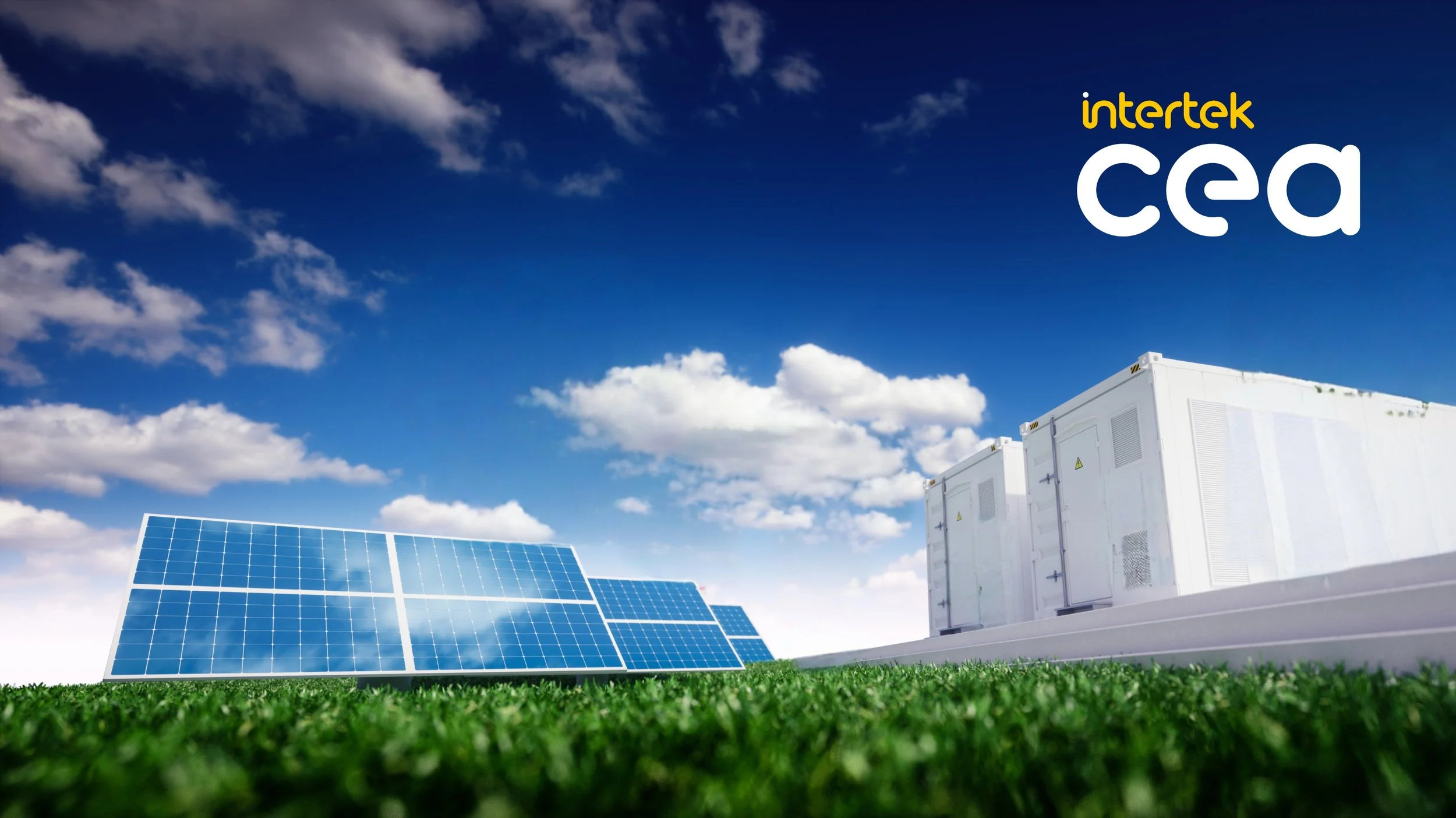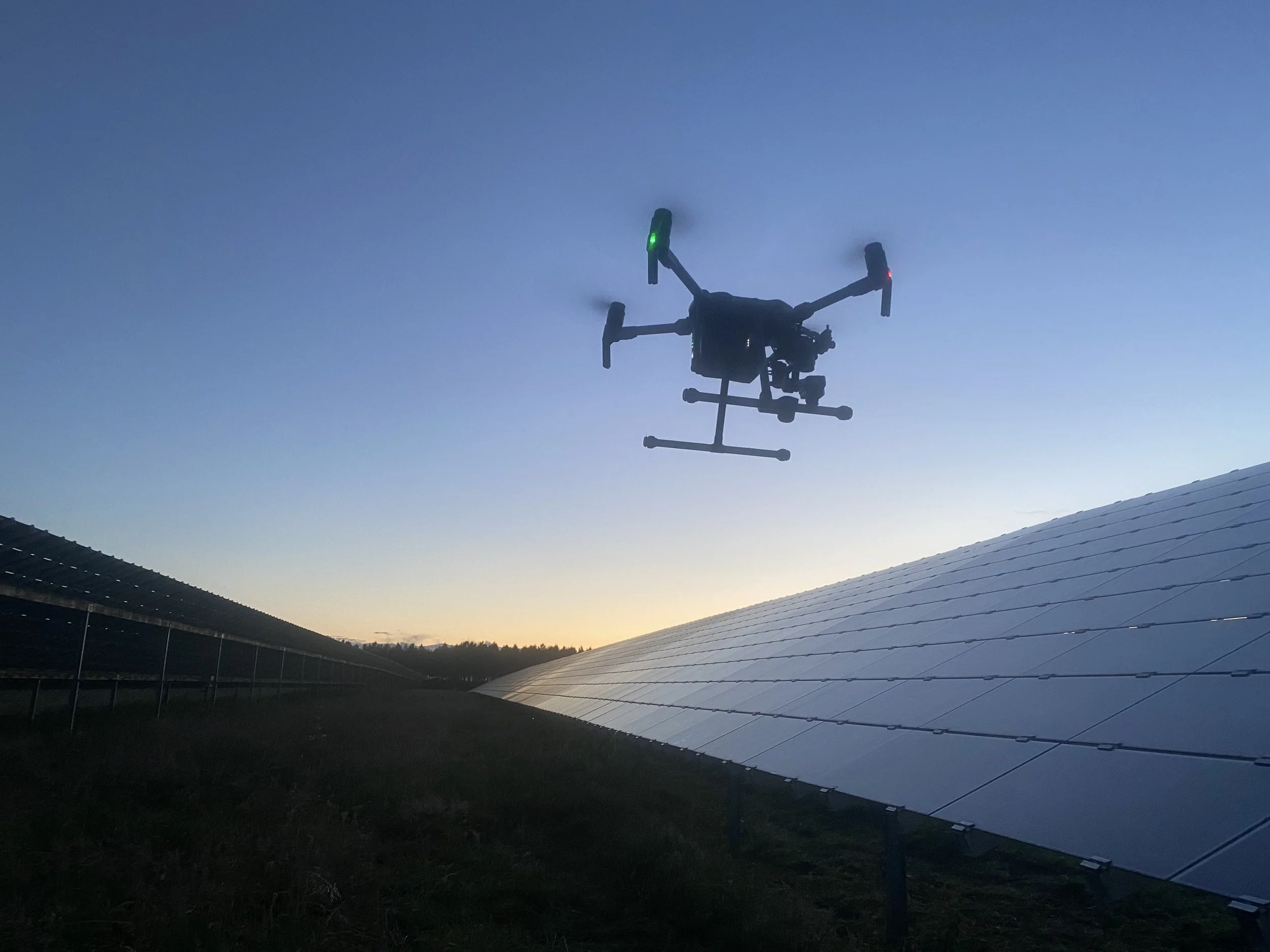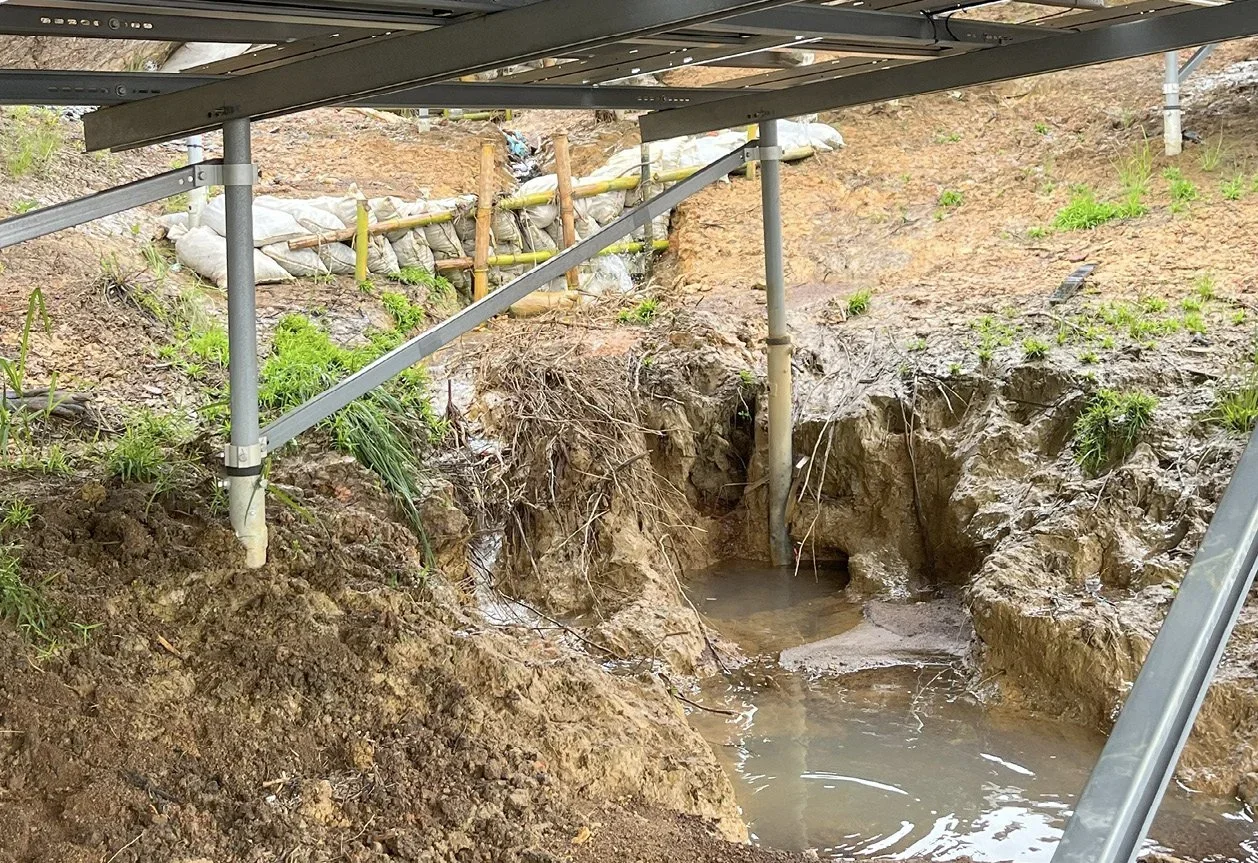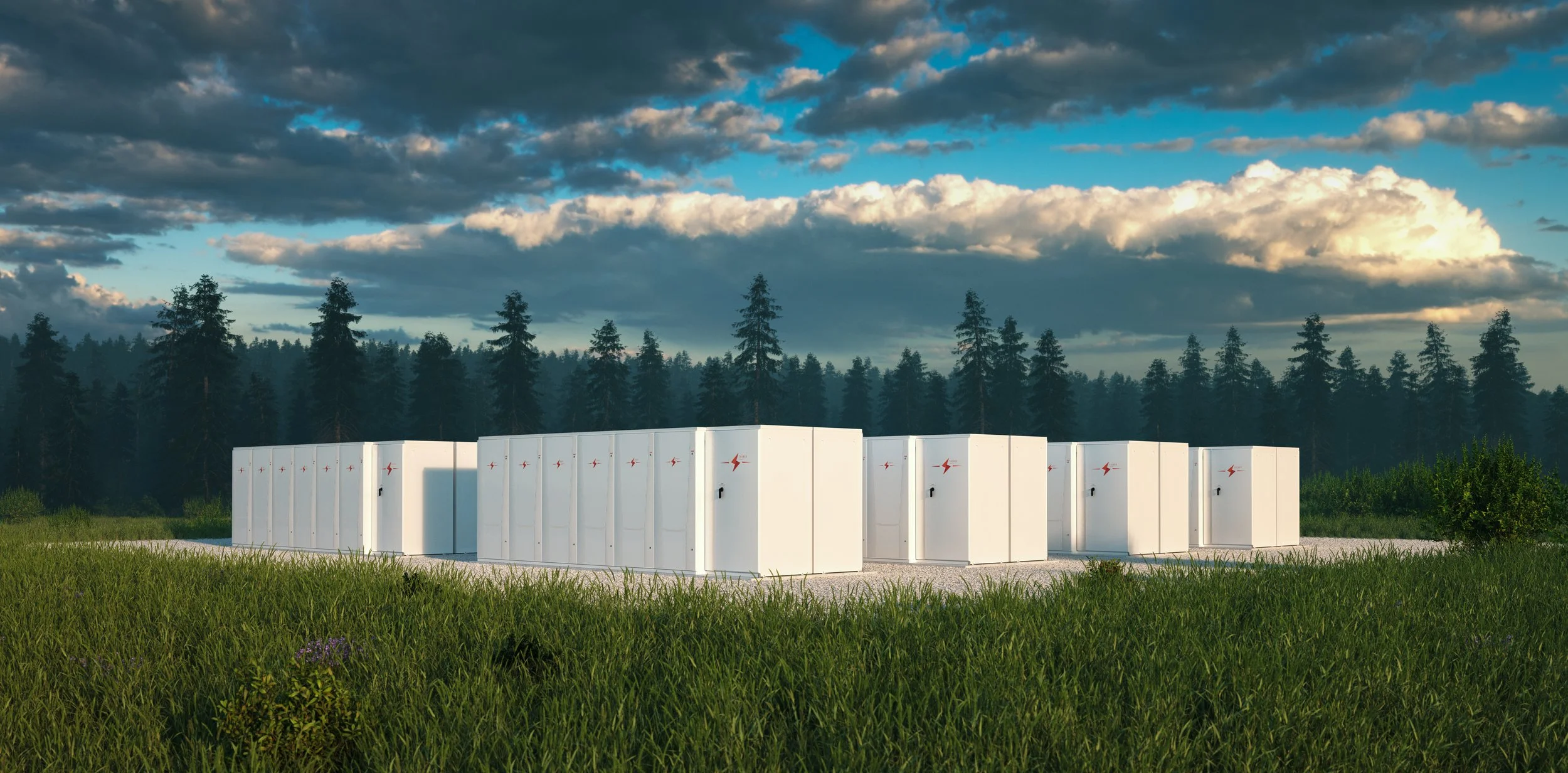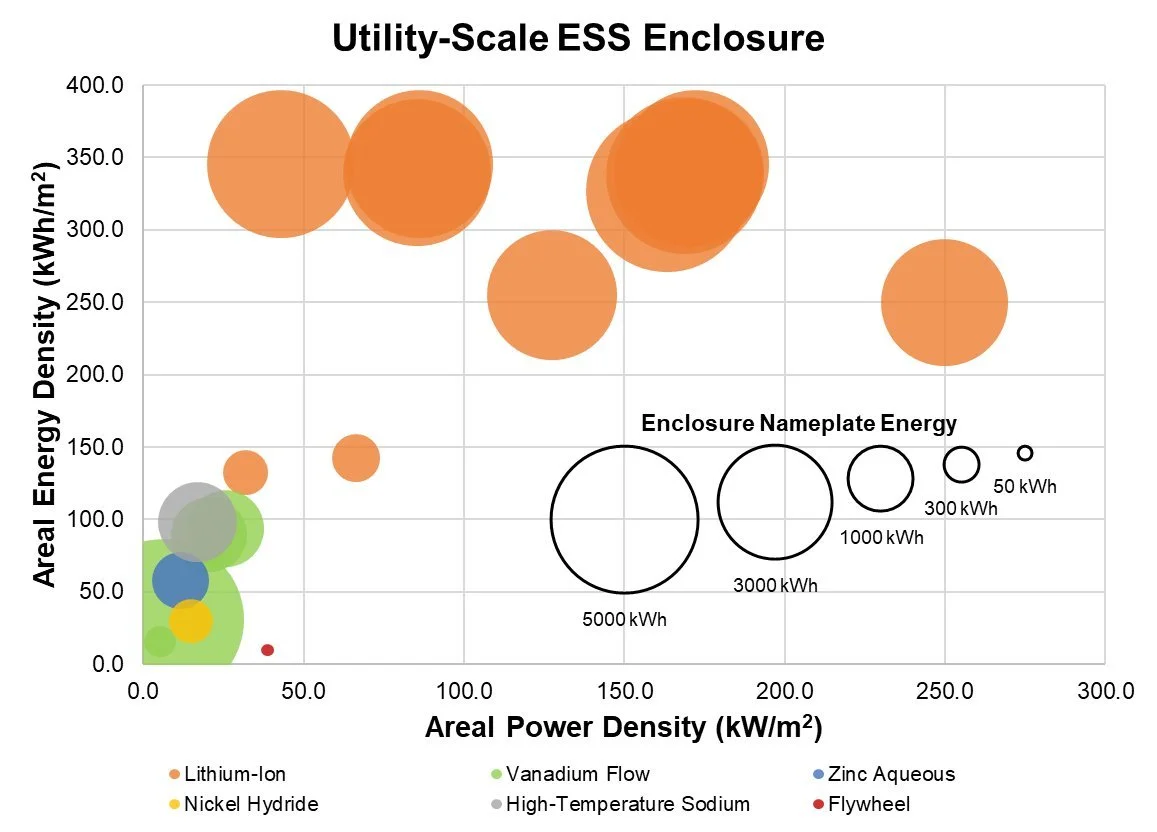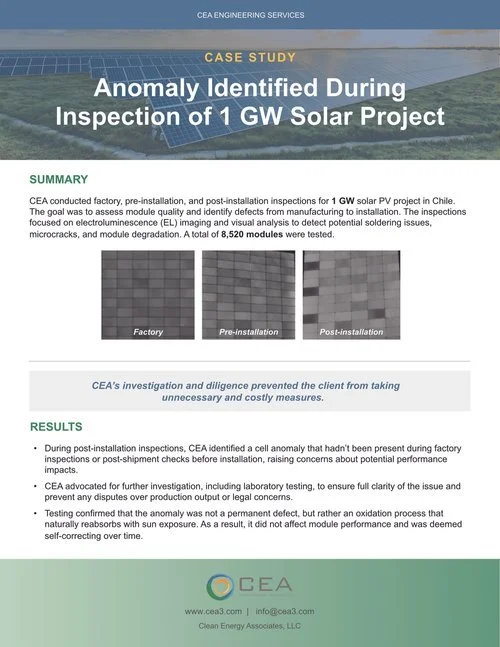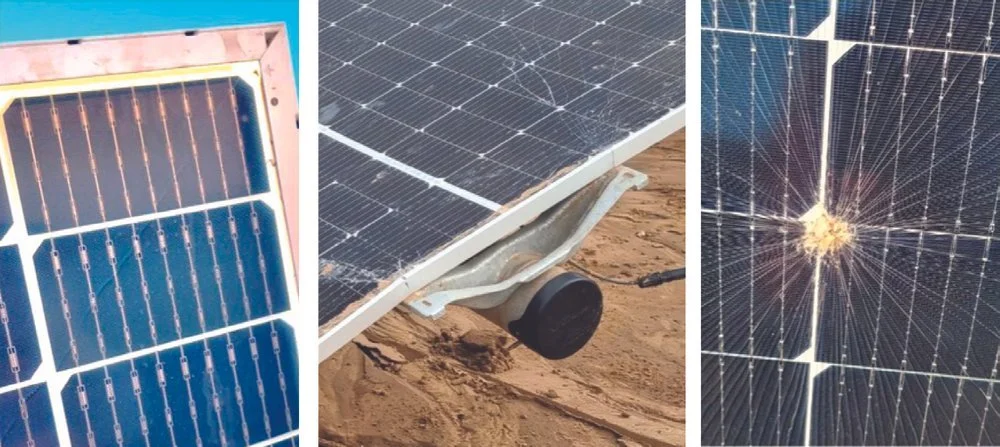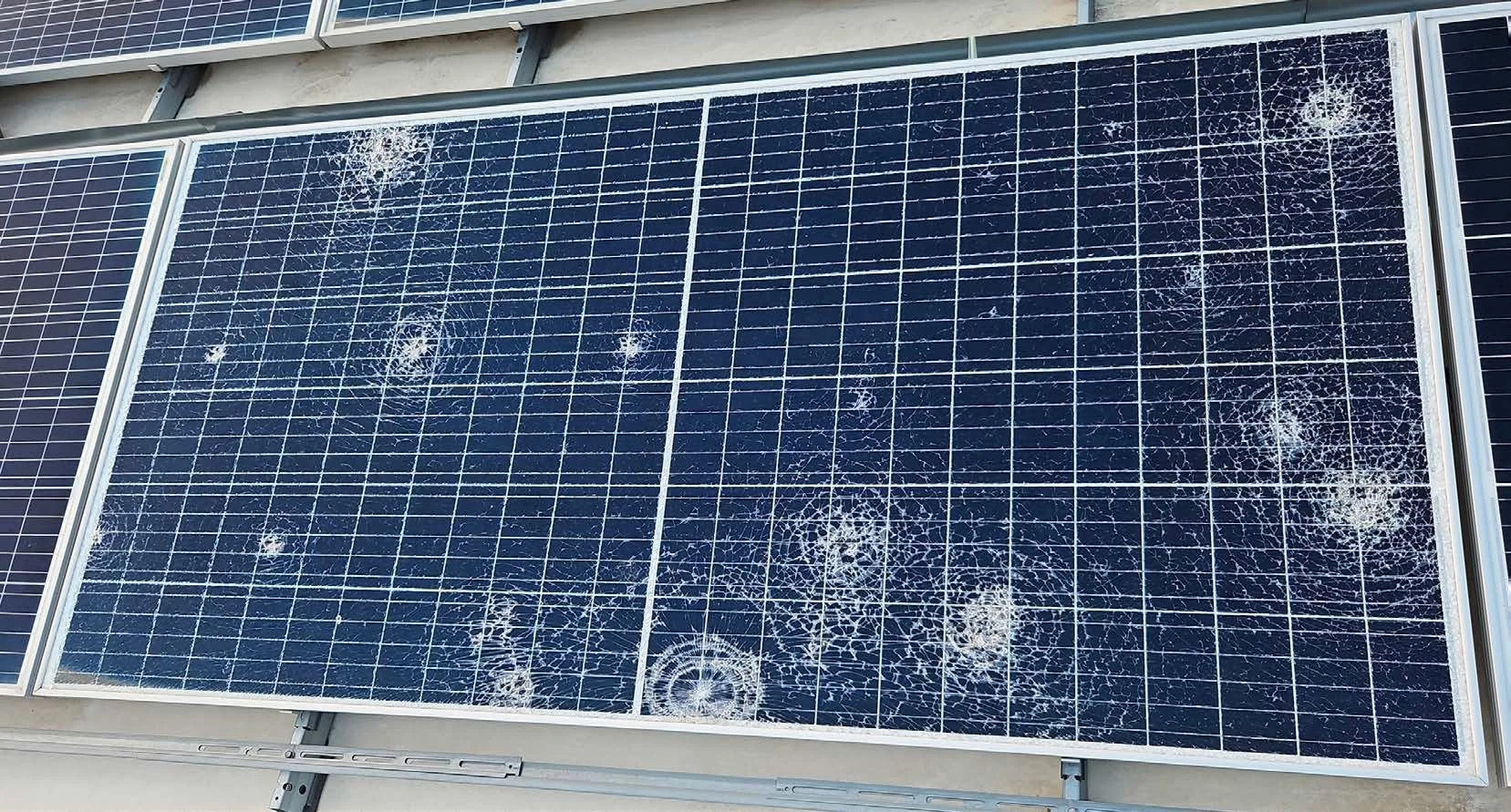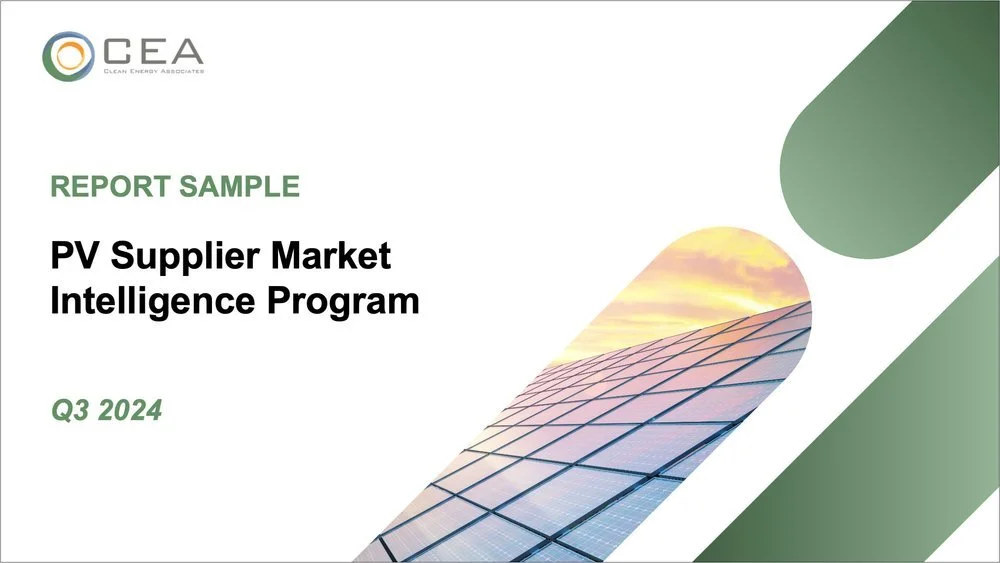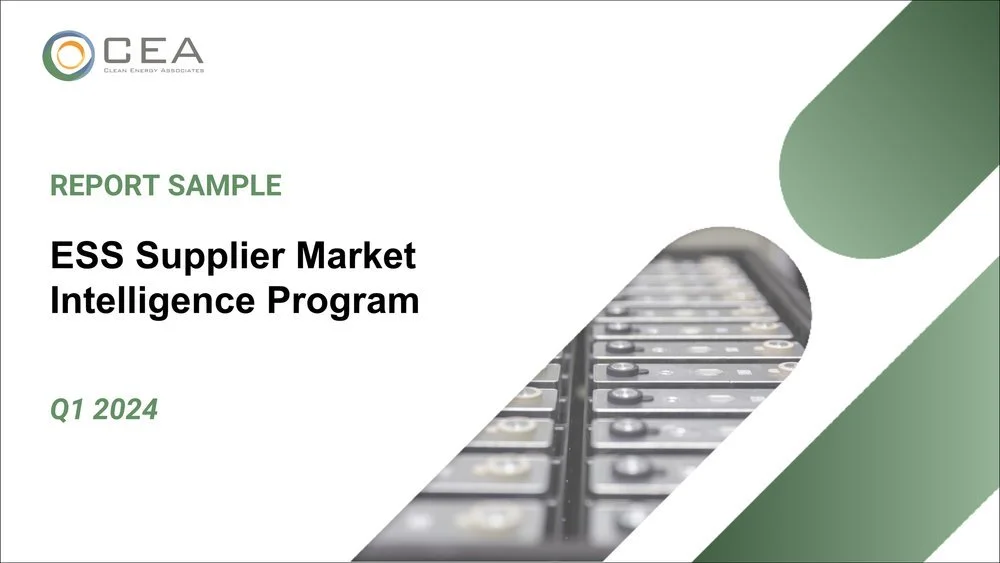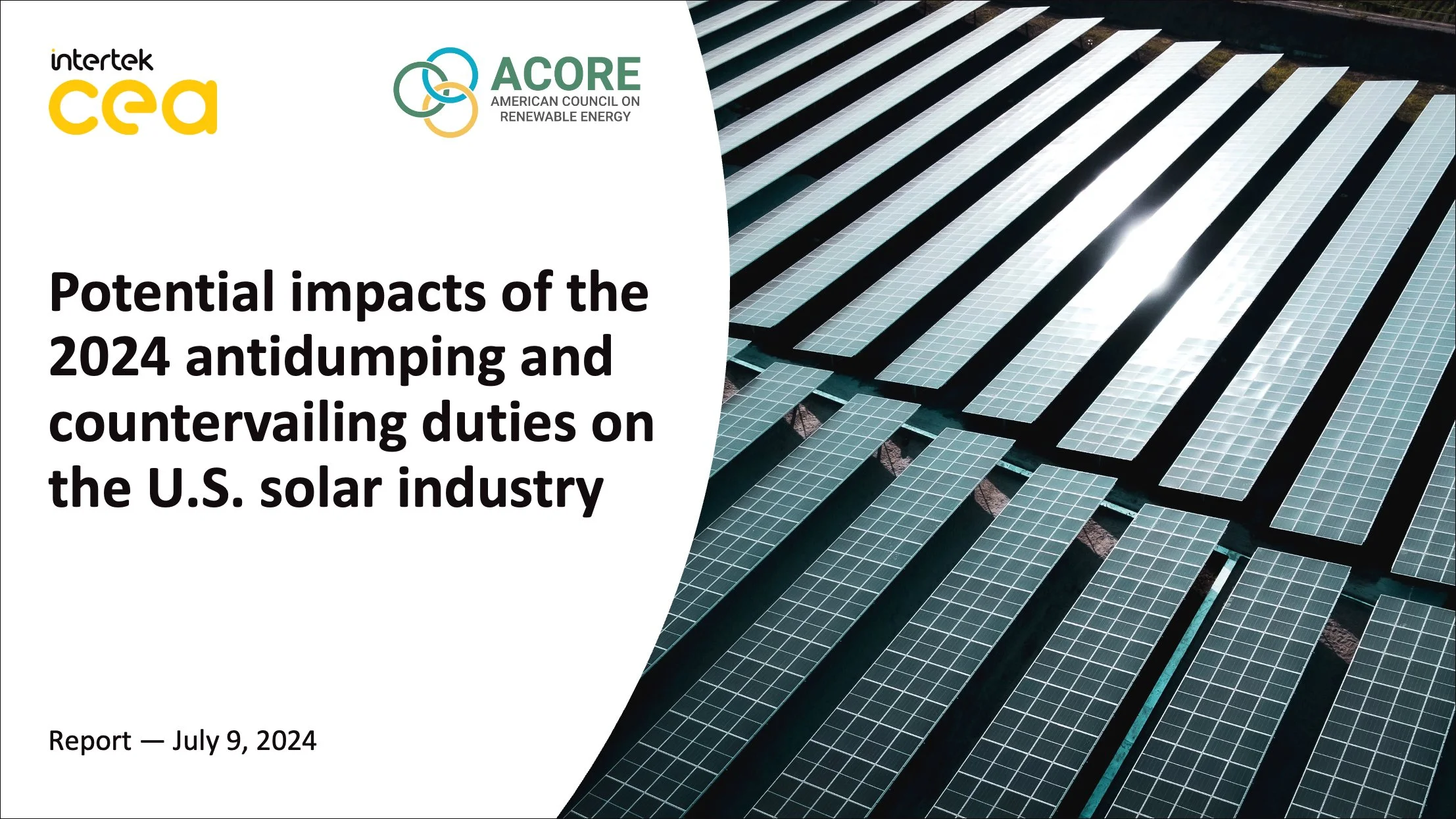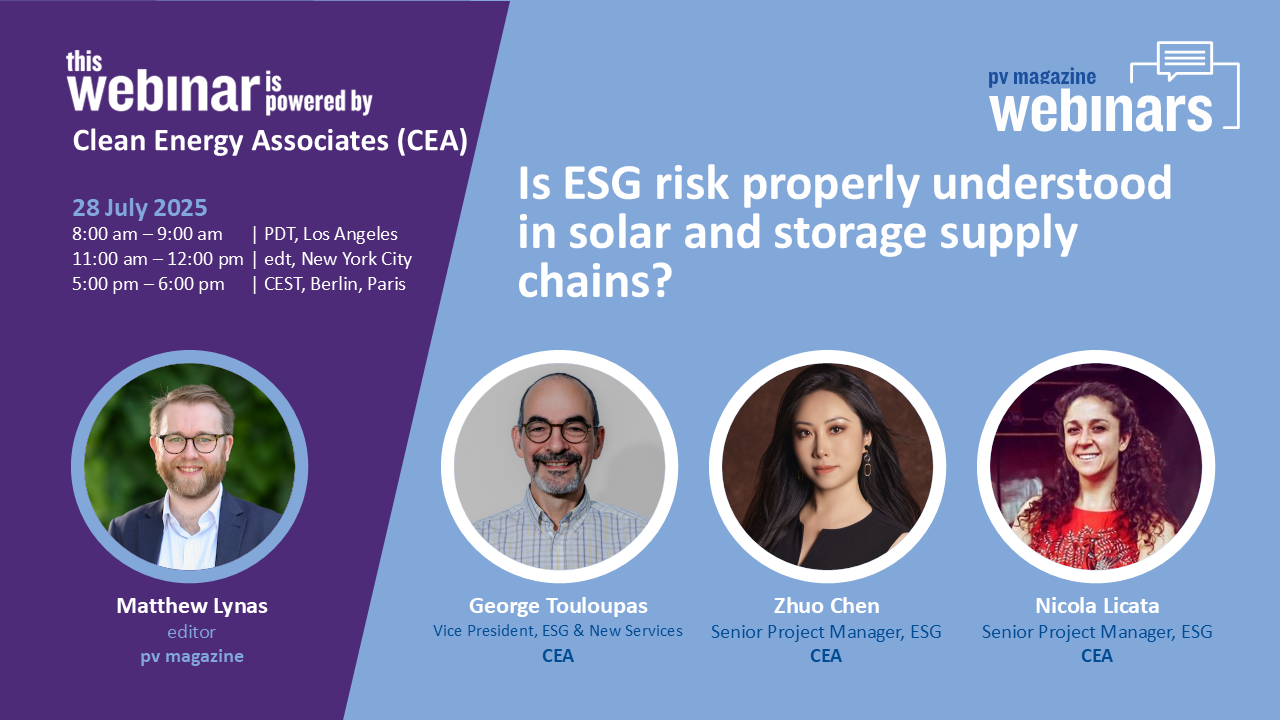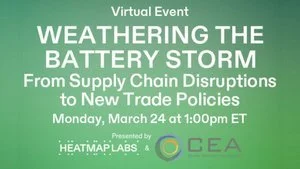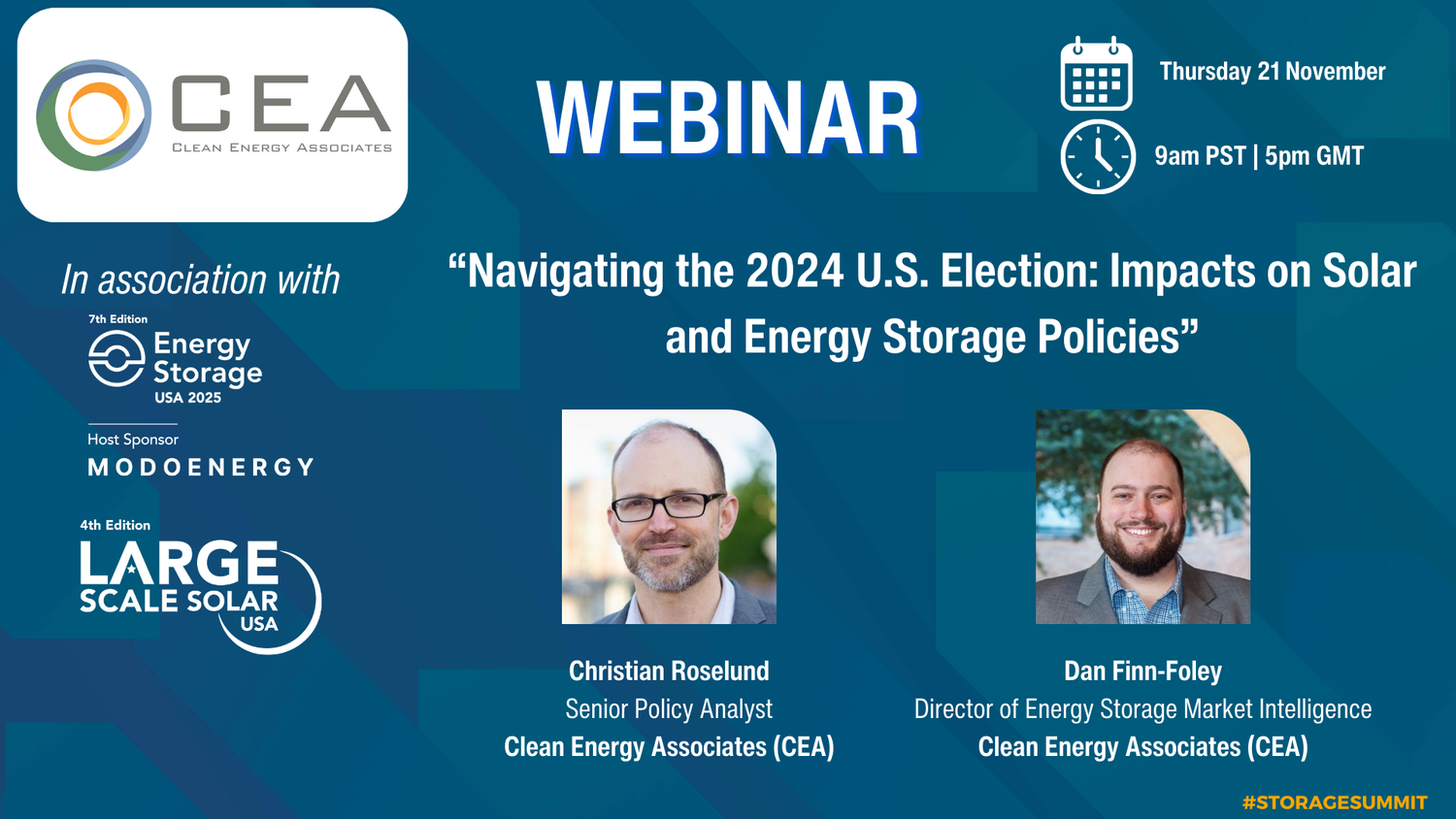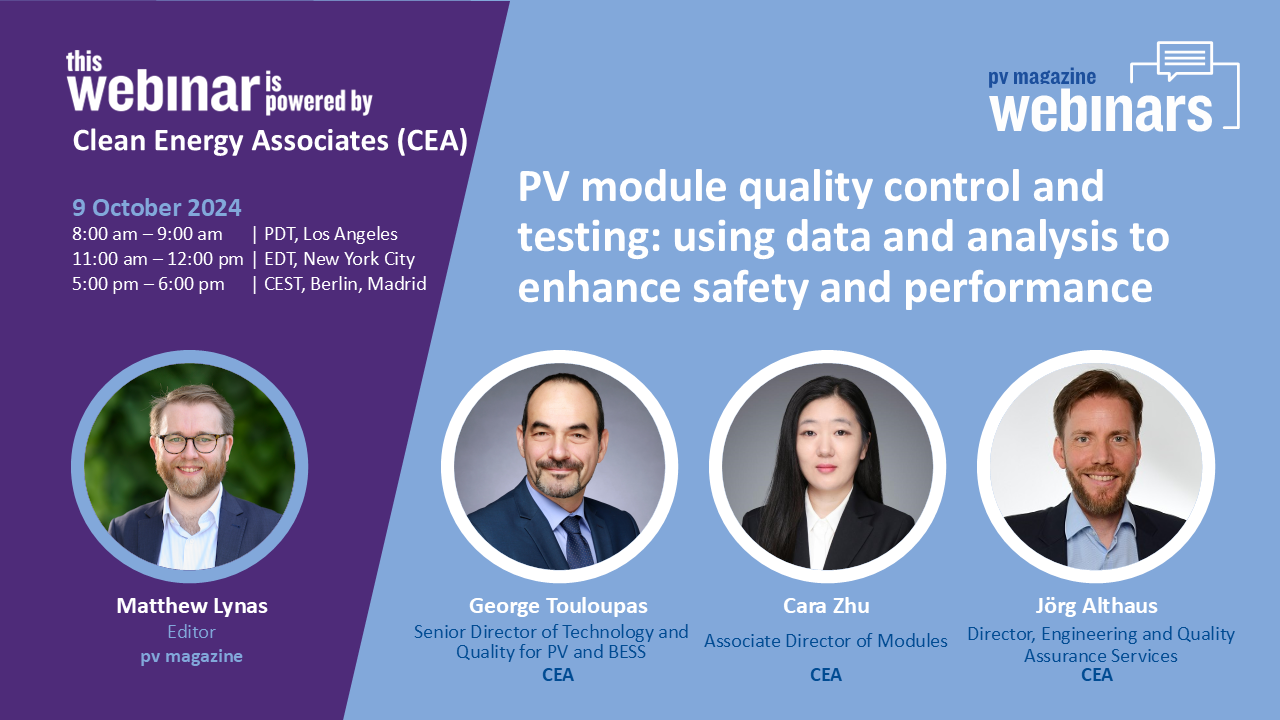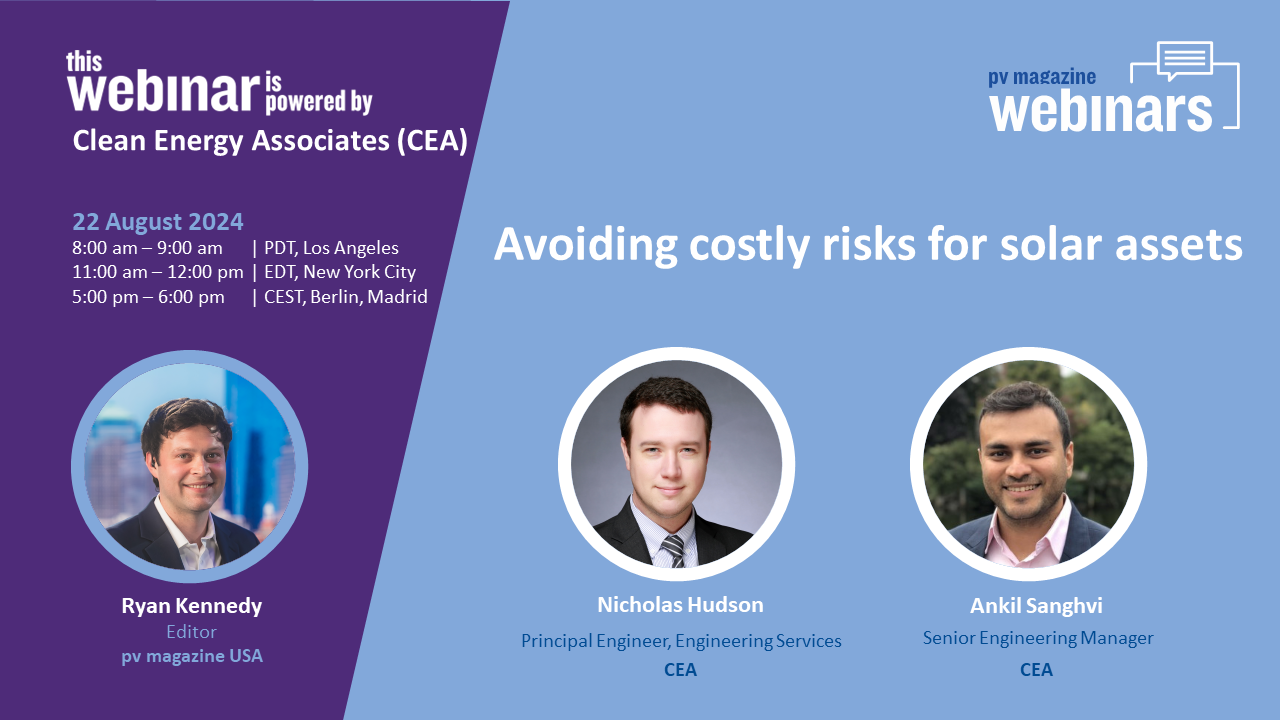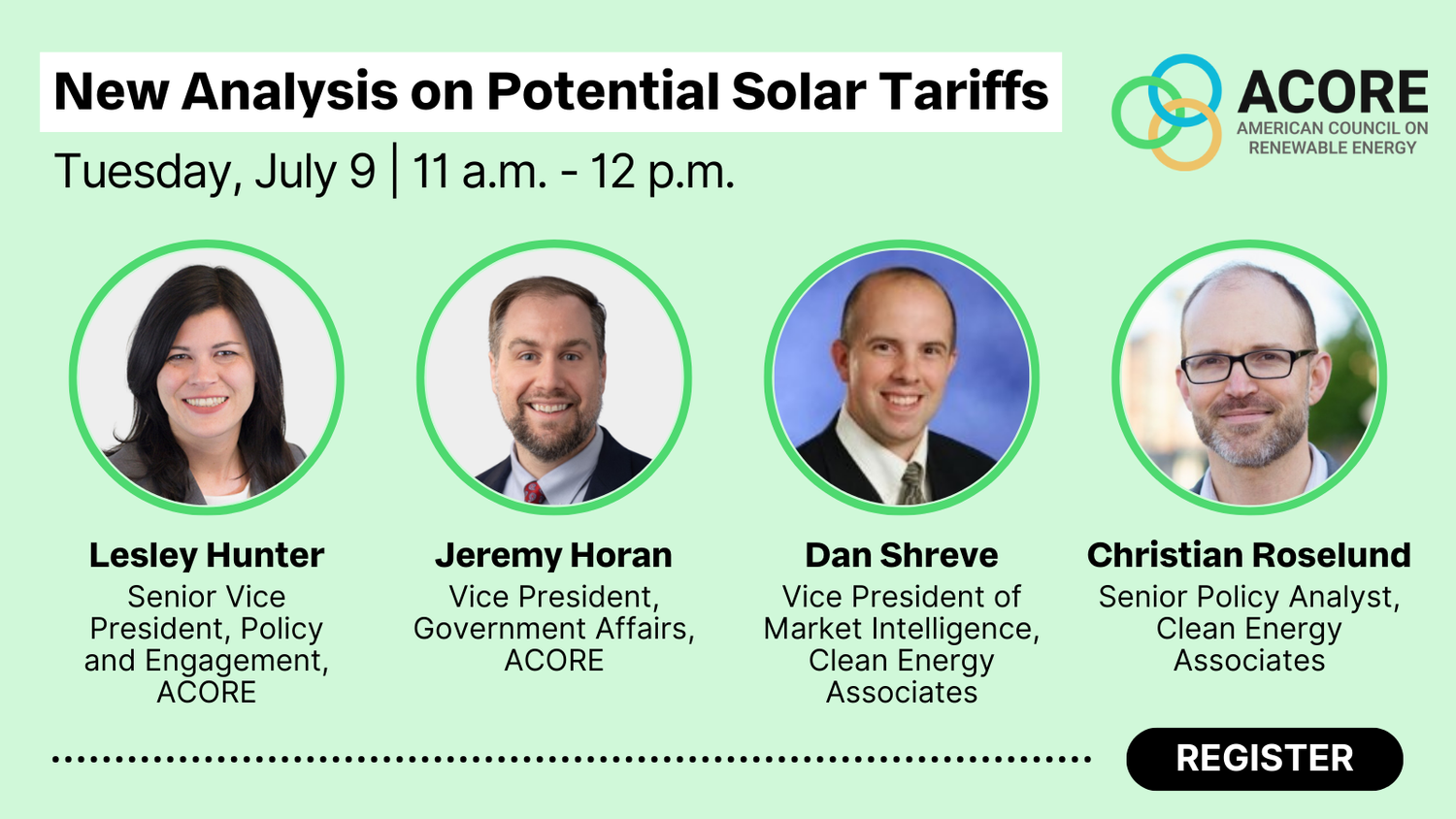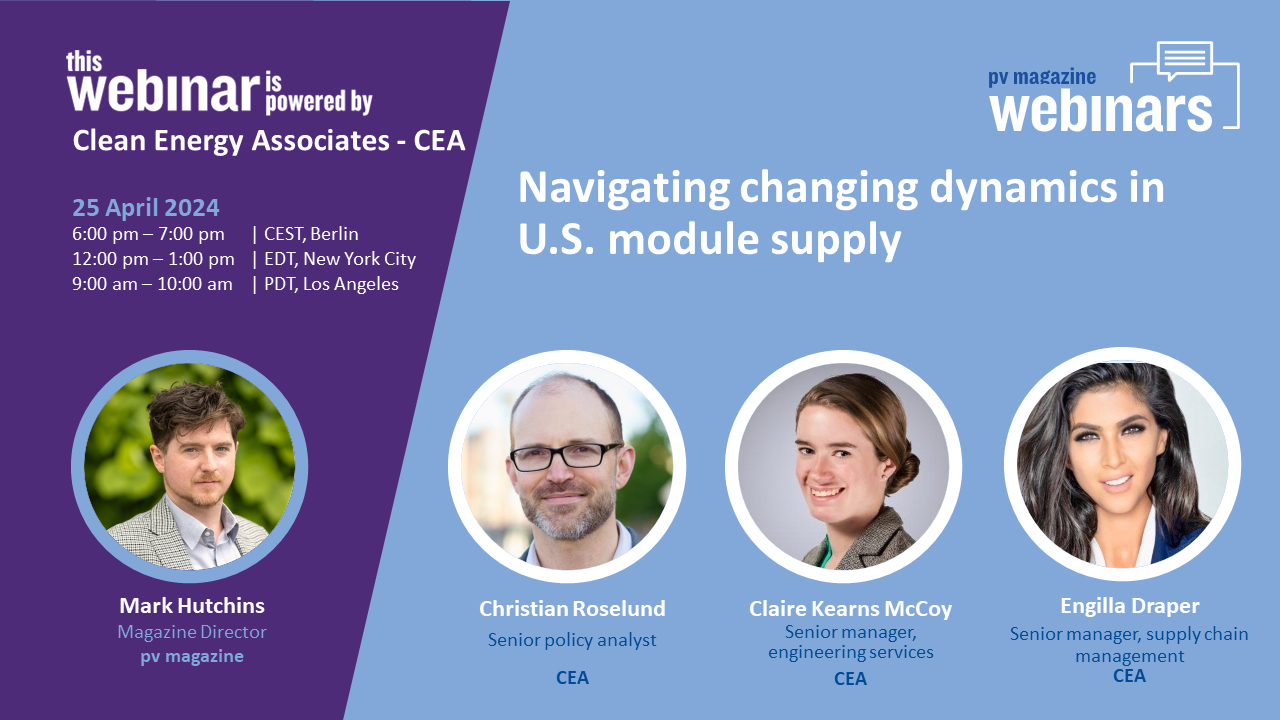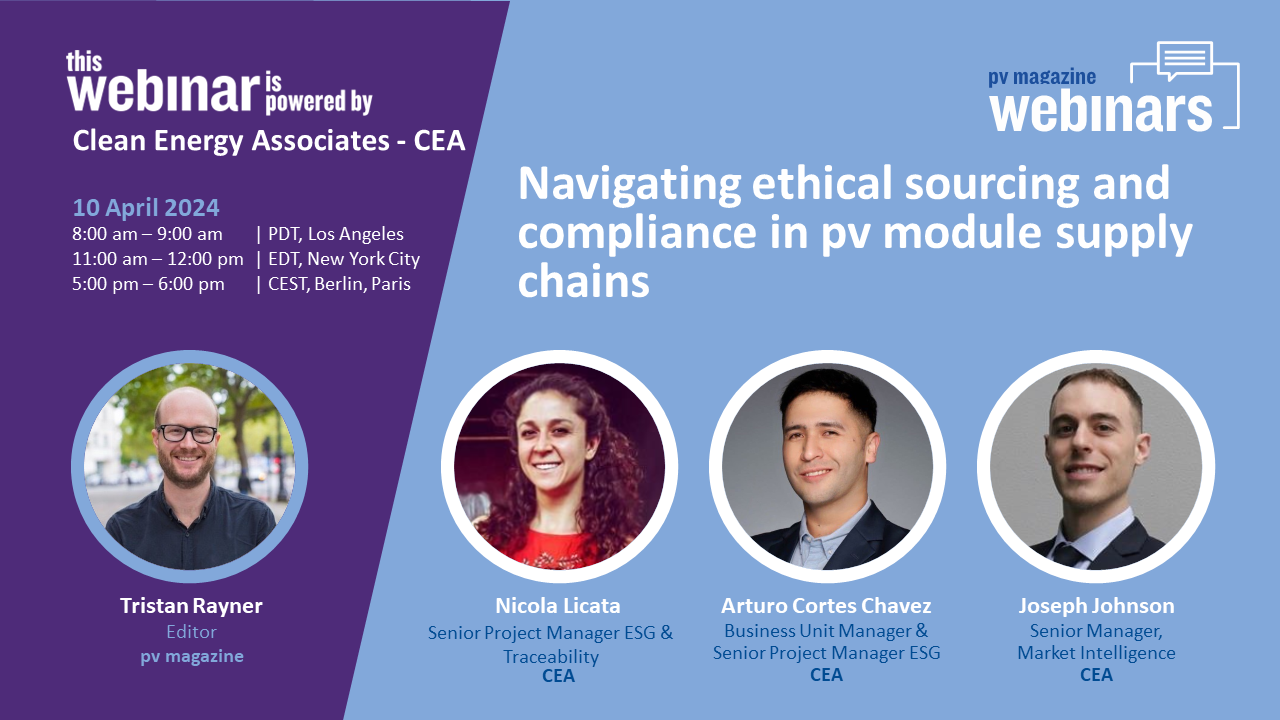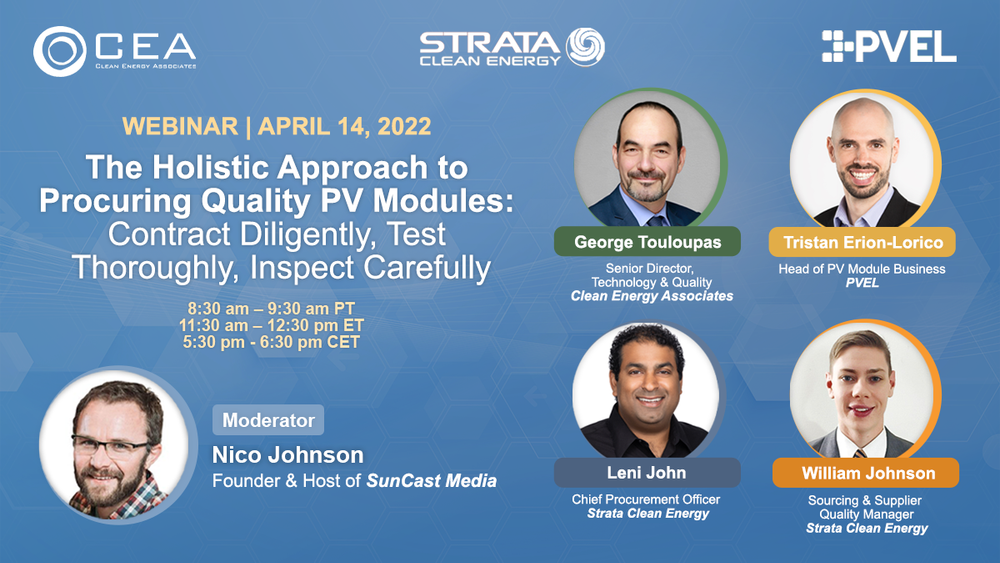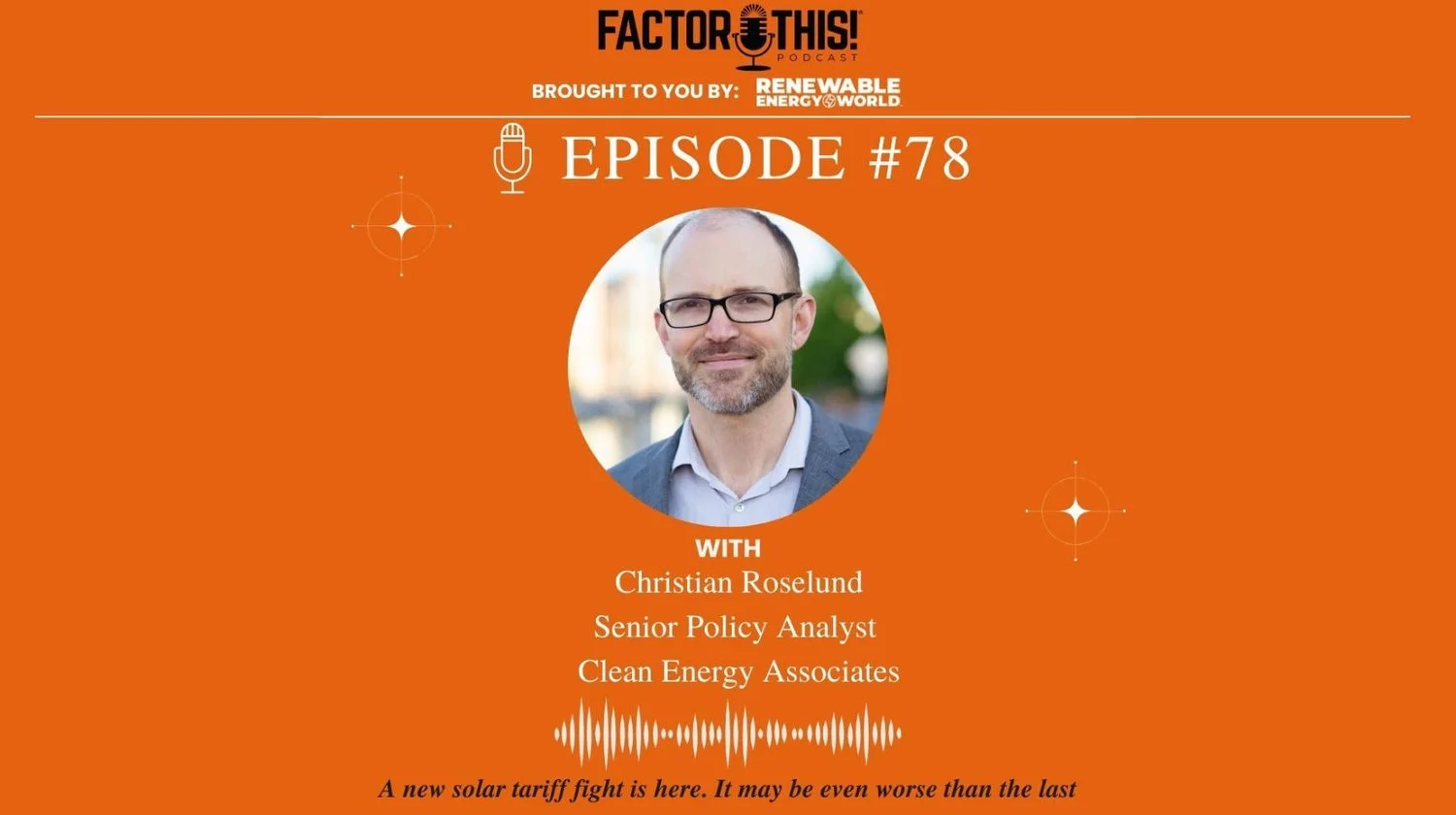Clean Energy Insights
Blogs
George Touloupas, Vice President of ESG and New Services at Intertek CEA, and Huatian Xu, Director of Technology and Quality, analyze the September 2025 results from the pv magazine test outdoor installations in Yinchuan, China, and Dammam, Saudi Arabia.
In this pv magazine article, Jeff Zwijack, Intertek CEA’s Senior Manager for Energy Storage, explains how tariffs are driving a shift to U.S. battery integration. He notes that while local assembly scales quickly, it introduces human variability requiring strict oversight.
In this LG Energy Solution article, Daniel Finn-Foley of Intertek CEA discusses how lithium-ion batteries have rapidly reshaped the U.S. power sector, growing from about 1 GWh of installations in 2020 to more than 30 GWh by 2024. He warns that new tariffs and FEOC restrictions are straining supply chains, making early procurement crucial as compliant domestic capacity tightens.
In this pv magazine article, George Touloupas, vice president ESG and New Services at Intertek CEA, outlines the growing environmental, social, and governance (ESG) obligations facing the solar and energy storage industries as global renewable deployment accelerates.
Clean Energy Associates becomes Intertek CEA, further solidifying the integration of Intertek’s solar and energy storage businesses.
In this PV Tech article, Joerg Althaus, Intertek CEA’s Director of Engineering Services and Quality Assurance, warns that racking complexity, corrosion, evolving supply chains, and rising glass breakage risks pose growing challenges to solar PV projects.
In this Energy Storage News article, Jeff Zwijack highlights how most quality issues in battery energy storage systems emerge during final integration rather than cell production, with defects like faulty fire suppression, poor thermal management, and enclosure weaknesses frequently slipping through.
George Touloupas, Vice President of ESG and New Services at Intertek CEA, and Huatian Xu, the company’s Director of Technology and Quality, analyze the first three months of performance data from the new pv magazine outdoor test installation in Dammam, Saudi Arabia.
In this PV Magazine article, Jörg Althaus of Intertek CEA and Andreas Fladung of Aerial PV Inspection highlight how electroluminescence (EL) testing — including drone-based approaches — can uncover microcracks, early degradation, and installation-related damage.
In this PV Magazine article, Intertek CEA's engineering experts highlight how overlooked site-specific challenges such as poor soil conditions, flash floods, complex terrain, and extreme wind loading in Southeast Asia can derail solar projects if not addressed early through rigorous engineering and civil due diligence.
In this article, originally published in MESIA's Mid-year Solar Report 2025, Jeff Zwijack, Associate Director of Energy Storage at Intertek CEA, explains that most defects in battery energy storage systems arise during system-level integration rather than cell or module production.
This article highlights how Intertek CEA’s audit prevented defective battery cabinets from reaching a project site and exposed the supplier’s resale of unsafe equipment. The case underscores the importance of independent quality oversight.
In kWh Analytics’ latest Solar Risk Assessment report, Intertek CEA highlights that fire suppression system issues were identified in 28% of energy storage systems during factory inspections.
Solar modules are growing larger, thinner, and more powerful—but a recurring issue is emerging worldwide: broken glass. According to Intertek CEA’s Joerg Althaus, these cracks often start near the frame or clamps and can spread from a few panels to thousands, without any obvious cause like hail or mishandling.
Sonnedix, an international renewable energy producer, engaged Clean Energy Associates (CEA) to conduct commissioning inspections for its recently-installed solar projects. The goal of the work was to ensure that their contractor (EPC) followed the agreed scope of work. CEA provided independent verification that all work met stringent quality and safety standards.
In this PV Tech article, Martin Meyers explores how the Inflation Reduction Act is reshaping U.S. solar manufacturing incentives and project economics. He highlights the evolving challenges developers face in navigating domestic content requirements and qualifying for bonus tax credits.
In this Energy Storage News article, CEA’s Senior Energy Storage Engineer Ahn Vu explores how alternative technologies to lithium-ion are unlikely to oust the incumbent anytime soon.
You can build an entire energy infrastructure project and still wait years to flip the switch. In today’s market, it’s not the modules or permitting that cause the longest delays. Clean Energy Associates’ Eddy Ji explains how high demand for transformers and other essential grid infrastructure equipment is slowing things down.
CEA conducted factory, pre-installation, and post-installation inspections for 1 GW solar PV portfolio in Chile. The goal was to assess module quality and identify defects from manufacturing to installation. The inspections focused on electroluminescence (EL) imaging and visual inspection to detect potential soldering issues, microcracks, and other module degradation mechanisms. A total of 8,520 images were taken.
A solar project developer engaged CEA to investigate widespread glass breakage across multiple PV sites. CEA conducted comprehensive on-site inspections and structural assessments, which pointed to possible issues related to module durability and mounting system compatibility.
In this Energy Storage News article, Anjali Joshi, Market Intelligence Analyst at Clean Energy Associates, explains how the shifting political landscape is reshaping the U.S. battery gigafactory race—putting smaller vendors at a disadvantage as larger players consolidate their power.
While President Donald Trump’s sweeping levies on foreign imports have captured global headlines, antidumping and countervailing duty (AD/CVD) investigations into Southeast Asian products, along with a potential expansion of the Uyghur Forced Labor Prevention Act (UFLPA), could pose even greater risks for US solar and energy storage.
This case study explores a thermal event inspection carried out by Clean Energy Associates (CEA) at a rooftop solar PV installation. CEA found the access to the roof was unsecured that allowed unauthorized cleaning of the site prior to the start of the investigation.
Clean Energy Associates (CEA) is receiving more calls from solar developers concerned about warehouse panel damage. CEA’s Senior Engineering Manager Claire Kearns McCoy explains how improper handling, stacking, and storage conditions can lead to long-term issues.
In this Energy Storage News article, Aaron Marks, CEA’s Energy Storage Market Intelligence Consultant, examines Battery Energy Storage System (BESS) safety considerations and concerns in the aftermath of the Moss Landing fire.
Dan Finn-Foley of Clean Energy Associates looks at the road ahead for the US battery storage industry in the first of a series of regular, exclusive Guest Blogs for Energy-Storage.news.
The outlook for the U.S. solar and energy storage market in the coming year remains uncertain. We don’t know exactly what the Trump Administration will try to accomplish, how important energy policy will be relative to other policy goals, or how Congress, the courts, and administrative rulemaking processes may slow down, change, or add to those policy goals.
In this PV Magazine article, George Touloupas, CEA’s Senior Director for Technology and Quality, highlights the innovative strides made by Aiko Solar Energy’s Infinite Module Series.
In this pv magazine article, George Touloupas, CEA’s Senior Director for Technology and Quality, reviews the quality assurance (QA) activity and methodologies used to ensure PV performance and emphasizes the importance of data-driven approaches and continuous monitoring.
Claire Kearns-McCoy and Paul Wormser consider the lasting impact of a May 2019 hailstorm that damaged 400,000 solar panels in Texas.
Keep me updated with the latest industry insights
Market Insights
The PV SMIP provides a comprehensive and unbiased analysis of the top PV module manufacturers in the world. It offers detailed insights into capacities, technology, and efficiency roadmaps, along with Manufacturing, Capacity, and Technology (MCT) ratings for each supplier.
The latest Energy Storage System (ESS) Supplier Market Intelligence Report includes concise and standardized analyses of major LIB cell suppliers and BESS integrators, focusing on global production capacities, product portfolios, and notable projects.
The quarterly Energy Storage STPR provides global and regional supply chain analysis, technology trends, and policy insights. This quarter focuses on innovations in container and system layout efficiency, as well as the UK’s new cap-and-floor regime for long-duration energy storage.
The ESS Price Forecasting Report provides an in-depth five-year forecast for the price of a DC battery container, including battery cells, modules, racking, and additional balance of system needed for a containerized battery system.
The PV Price Forecasting Report provides independent market intelligence on changes in global supply chains and accurate forecasts for supply price scenarios based on technologies, materials, manufacturing regions and target markets, as well as supply and demand forecasts and analysis.
The quarterly published PV STPR covers global and regional supply chain analysis, technology trends, and regional policy analysis through early July 2025.
The PV SMIP provides a comprehensive and unbiased analysis of the top PV module manufacturers in the world. It offers detailed insights into capacities, technology, and efficiency roadmaps, along with Manufacturing, Capacity, and Technology (MCT) ratings for each supplier.
The ESS Price Forecasting Report provides an in-depth five-year forecast for the price of a DC battery container, including battery cells, modules, racking, and additional balance of system needed for a containerized battery system.
The quarterly published Energy Storage STPR covers global and regional supply chain analysis, technology trends, and regional policy analysis. This quarter the focus is on new efforts for stackable BESS technology, the potential for non-lithium-ion technology as a tariff solution, and insights from a battery fire safety expert on myths vs. reality and best practices.
The latest Energy Storage System (ESS) Supplier Market Intelligence Report includes concise and standardized analyses of major LIB cell suppliers and BESS integrators, focusing on global production capacities, product portfolios, and notable projects.
This Interim Update of the Energy Storage System (ESS) Q1 2025 Price Forecasting Report highlights how newly imposed U.S. tariffs are reshaping the cost landscape for imported battery systems and components from China.
The latest Energy Storage System (ESS) Supplier Market Intelligence Report finds that the market landscape for lithium-ion batteries continues to evolve, and supplier strategy is shifting rapidly in response to the tariffs announced by the United States under the Trump administration, particularly on China, and persistently low prices.
The quarterly published Energy Storage STPR covers global and regional supply chain analysis, technology trends, and regional policy analysis. This quarter the focus is on non-lithium-ion technologies and the potential for long-duration energy storage.
The ESS Price Forecasting Report provides a five-year forecast for the price of a DC battery container, including battery cells, modules, racking, and additional balance of system needed for a containerized battery system. The Q1 2025 report covers pricing outlook updates through March 2025.
The PV SMIP report provides a comprehensive and unbiased analysis of the top PV module manufacturers in the world. It offers detailed insights into capacities, technology, and efficiency roadmaps, along with Manufacturing, Capacity, and Technology (MCT) ratings for each supplier.
The quarterly published PV STPR covers global and regional supply chain analysis, technology trends, and regional policy analysis.
The PV Price Forecasting Report provides independent market intelligence on changes in global supply chains and accurate forecasts for supply price scenarios based on technologies, materials, manufacturing regions and target markets, as well as supply and demand forecasts and analysis.
The quarterly published Energy Storage STPR covers global and regional supply chain analysis, technology trends, and regional policy analysis. This quarter the focus is on non-lithium-ion technologies and the potential for long-duration energy storage.
The PV SMIP provides a comprehensive and unbiased analysis of the top PV module manufacturers in the world. It offers detailed insights into capacities, technology, and efficiency roadmaps, along with Manufacturing, Capacity, and Technology (MCT) ratings for each supplier.
The quarterly published PV STPR covers global and regional supply chain analysis, technology trends, and regional policy analysis. This quarter, the regional analysis includes CEA’s policy and supply analysis in China, Europe, the United States, and India.
The ESS Price Forecasting Report provides an in-depth five-year forecast for the price of a DC battery container, including battery cells, modules, racking, and additional balance of system needed for a containerized battery system.
The latest Energy Storage System (ESS) Supplier Market Intelligence Report finds that overall planned capacity continued to decline as project cancellations and delays continue to mount on the growing lithium-ion industry due to softer-than-expected EV demand.
The latest Energy Storage System (ESS) Supplier Market Intelligence Report finds that weak global EV demand growth continued to affect planned cell manufacturing capacity.
The quarterly published Energy Storage STPR covers global and regional supply chain analysis, technology trends, and regional policy analysis. This quarter the focus is on the ramp-up of energy capacity per container and container shipping trends.
The ESS Price Forecasting Report provides an in-depth five-year forecast for the price of a DC battery container, including battery cells, modules, racking, and additional balance of system needed for a containerized battery system.
The PV Price Forecasting Report provides independent market intelligence on changes in global supply chains and accurate forecasts for supply price scenarios based on technologies, materials, manufacturing regions and target markets, as well as supply and demand forecasts and analysis.
The PV SMIP provides a comprehensive and unbiased analysis of the top PV module manufacturers in the world. It offers detailed insights into capacities, technology, and efficiency roadmaps, along with Manufacturing, Capacity, and Technology (MCT) ratings for each supplier.
The quarterly published PV STPR covers global and regional supply chain analysis, technology trends, and regional policy analysis. This quarter, the regional analysis includes CEA’s policy and supply analysis in China, Europe, the United States, the Middle East, and India. Technology trends continue to cover TOPCon and HJT degradation.
The latest Energy Storage System (ESS) Supplier Market Intelligence Report finds that weak demand continued along with battery manufacturing overcapacity, primarily in China which is the largest battery consumer and producer globally.
The PV Price Forecasting Report provides independent market intelligence on changes in global supply chains and accurate forecasts for supply price scenarios based on technologies, materials, manufacturing regions and target markets, as well as supply and demand forecasts and analysis.
Reports & White Papers
Intertek CEA conducted quality audits at 70+ battery energy storage factories worldwide. Our data shows that in 2024 the vast majority of identified quality issues were at the system level.
The Inflation Reduction Act (IRA) and evolving regulations have reshaped U.S. PV module manufacturing, creating challenges for domestic content compliance. This report outlines key strategies to maximize benefits under current U.S. supply chain regulations and incentives.
Over the past 8 years, Intertek CEA has conducted more than 70,000 quality inspections in over 300 PV module factories. This report highlights concerning quality trends from the past few years in PV module manufacturing, which could lead to performance and safety risks in the field.
On Tuesday, October 1, 2024, the U.S. Department of Commerce issued the Preliminary Determination in its countervailing duty (CVD) investigation against PV cells from Cambodia, Malaysia, Thailand, and Vietnam. CEA developed a briefing and analysis of the preliminary determination rates and critical circumstances.
A new analysis by CEA, commissioned by the American Council on Renewable Energy (ACORE), outlines the potential impacts of the recent U.S. antidumping and countervailing duties (AD/CVD) on solar cells and modules from Southeast Asia.
Intertek CEA’s Market Intelligence team has developed a briefing that addresses four recent solar policy developments in the U.S.
On April 24, 2024, four U.S. solar manufacturers filed a new anti-dumping/countervailing duty (AD/CVD) petition with the U.S. Department of Commerce (DoC) against imports of solar cells from Cambodia, Malaysia, Thailand, and Vietnam. Intertek CEA has developed an update on this new solar AD/CVD petition.
Following extensive factory quality audits on over 30 GWh of energy storage projects over the past six years, Intertek CEA’s BESS Quality Risks Report highlights identified key defects and issues, including their causes and associated risks.
Intertek CEA's extensive field research unveils the hidden threats in solar PV modules, emphasizing the critical role of Electroluminescence (EL) testing in detecting unseen damages. Our findings highlight the lifecycle of module defects, the surge in microcracks, and the pivotal importance of visual inspections in identifying issues often missed by other methods.
Uncover the truth about solar rooftop safety. Download Intertek CEA's report, learn common risks, and strategize remediation.
Webinars
In this pv magazine USA Week session, Joseph Johnson, Associate Director of Market Intelligence, shares his insights on the challenges facing the U.S. solar supply chain, the drive toward domestic manufacturing, and strategies for navigating trade restrictions and compliance.
In this Energy Storage News webinar, Intertek CEA Market Intelligence experts Daniel Finn-Foley and Christian Roselund explore the implications of the U.S. budget reconciliation bill, H.R. 1, for the energy storage industry.
In this pv magazine Webinar, Intertek CEA’s supply chain experts—George Touloupas, Vice President of ESG & New Services, and Senior Project Managers Zhuo Chen and Nicola Licata—outline key ESG risks and share best practices for documenting and mitigating them.
In this SunCast webinar, Jeff Zwijack, Intertek CEA’s Associate Director of Energy Storage, shares key insights on common quality issues found in BESS factories and how project teams can proactively mitigate risks through smarter supplier selection, contract safeguards, and robust QA practices.
As solar deployments continue to grow, so do the risks of module failures, underperformance, and safety hazards—many of which are preventable with the right knowledge. In this Solar Power World webinar, Intertek CEA Senior Engineering Managers Claire Kearns-McCoy and Ankil Sanghvi explain how understanding common pitfalls—from thermal events to electrical failures—can help developers avoid millions in losses.
This pv magazine webinar addresses the quality risks U.S. solar module buyers face due to increased warehousing and the emergence of new manufacturing facilities. Experts from Clean Energy Associates (CEA) will discuss the rise in warehoused modules, common storage-related risks, quality concerns in new manufacturing environments, and strategies to mitigate these issues
Weathering the Battery Storm: From Supply Chain Disruptions to New Trade Policies
In this Energy Storage webinar, Senior Policy Analyst Christian Roselund and Director of Energy Storage Market Intelligence Dan Finn-Foley analyze the potential impacts of U.S. policy changes on solar and battery storage.
In this pv magazine USA week webinar, CEA’s Senior Policy Analyst, Christian Roselund, joins other industry professionals to discuss the Inflation Reduction Act, the high demand for renewable energy procurement, and shifting trade policies that are driving a steady flow of new factory announcements in the US.
In this webinar, CEA experts present findings on the most common issues seen in PV manufacturing factories, based on their latest inspection data.
In this Energy Storage News Webinar, CEA's experts Jeff Zwijack, Associate Director of Energy Storage, and Aaron Marks, take a deep dive into BESS procurement strategies with guidance and advice on how to navigate this complex landscape.
In this pv magazine Webinar, Nicholas Hudson, Principal Engineer Engineering Services, and Ankil Sanghvi, Senior Engineering Manager at CEA, shed light on how thermal events and other costly safety issues are often driven by preventable failures.
In this Canary Media webinar, Clean Energy Associates dives into the current state of the lithium-ion supply chain and an outlook for how it will evolve over the next five years.
In this webinar hosted by ACORE, CEA experts Dan Shreve, Vice President of Market Intelligence, and Christian Roselund, Senior Policy Analyst, present a new analysis of the impact of new potential Antidumping and Countervailing Duties (AD/CVD) on solar cells and modules from Southeast Asia.
In this pv magazine Webinar, Nicholas Hudson, Principal Engineer Engineering Services, and Jörg Althaus, Director Engineering and Quality Assurance Services, discuss common issues during production, what the downstream impact of those issues are, and action that can be taken to prevent these risks.
The U.S. solar market is facing a shift from PV module oversupply and falling prices to potential scarcity due to new trade cases. This pv magazine webinar explores the changing supply dynamics, highlighting risks, opportunities, and effective management strategies for buyers and stakeholders.
In this pv magazine webinar, CEA's traceability experts Nicola Licata, Arturo Cortes Chavez, and Joseph Johnson share insights on navigating sourcing strategies and compliance risks in the solar PV module market, focusing on both Chinese and non-Chinese suppliers.
In this webinar hosted by the American Solar Energy Society's PV Technical Division, CEA's Engineering Manager Claire Kearns-McCoy discusses solar PV module quality risks.
In this Energy-Storage.news webinar, CEA’s Battery Energy Storage System (BESS) experts will share essential lessons learned after performing factory quality audits on over 30GWh of BESS projects.
CEA's Director of Engineering Services, Jörg Althaus, joins pv magazine's Roundtables Europe 2023 to discuss how the industry is addressing the longevity, testing methods, and problem prevention of new solar panel technologies like TOPCon to safeguard investments.
The solar industry is experiencing the highest demand, fastest technological innovation, and greatest uncertainty in its history. Furthermore, in the wake of the recent AD/CVD investigation announcement, many PV buyers may turn to suppliers they have not purchased from before. What can PV module buyers be doing to mitigate quality risk?
pv magazine Roundtables USA included this presentation by CEA’s Senior Project Manager/Solar Engineer, Claire Kearns-McCoy on the importance of using EL imaging to ensure PV module quality.
Microcracks are tiny cracks in solar cells that can be caused during manufacturing, shipping, installation, and even after installation and can limit the power output of a module or a series string of modules.
Podcasts
Christian Roselund, Intertek CEA’s Senior Policy Analyst, joins the SunCast Media Podcast to decode how FEOC is reshaping the way projects are sourced, engineered, financed, and papered across the U.S. solar and storage market.
Christian Roselund, Senior Policy Analyst at Intertek CEA, joins the Clean Power Hour podcast to break down the intricate web of rules, tariffs, and supply chain constraints affecting the clean energy industry.
Dan Finn-Foley, Intertek CEA’s Director of Energy Storage Market Intelligence, joins the Currents podcast to discuss the impact of tariffs, shifting supply chains and emerging technologies on the US battery storage market.
Christian Roselund, Intertek CEA’s Senior Policy Analyst, joins the SunCast Podcast to discuss the new House budget bill threats to solar.
Dan Shreve, VP of Market Intelligence, and Christian Roselund, Senior Policy Analyst at Clean Energy Associates, help understand whether the recent AD/CVD investigations are expected to profoundly impact procurement in the coming months.
Christian Roselund, Senior Policy Analyst at CEA, joins the Factor This! Podcast to break down the impact of the latest U.S. solar tariffs and other policies.
This SunCast episode is a five-minute clip from the full episode with CEA’s Darryl Parker. In this episode, Darryl focuses on understanding the customer beyond your average sales training.
In this episode, Solar Maverick host Benoy Thanjan talks with CEA’s Director of ESG and Traceability, Paul van Brenkelen, about the importance of Environmental, Social and Governance in the solar supply chain.

